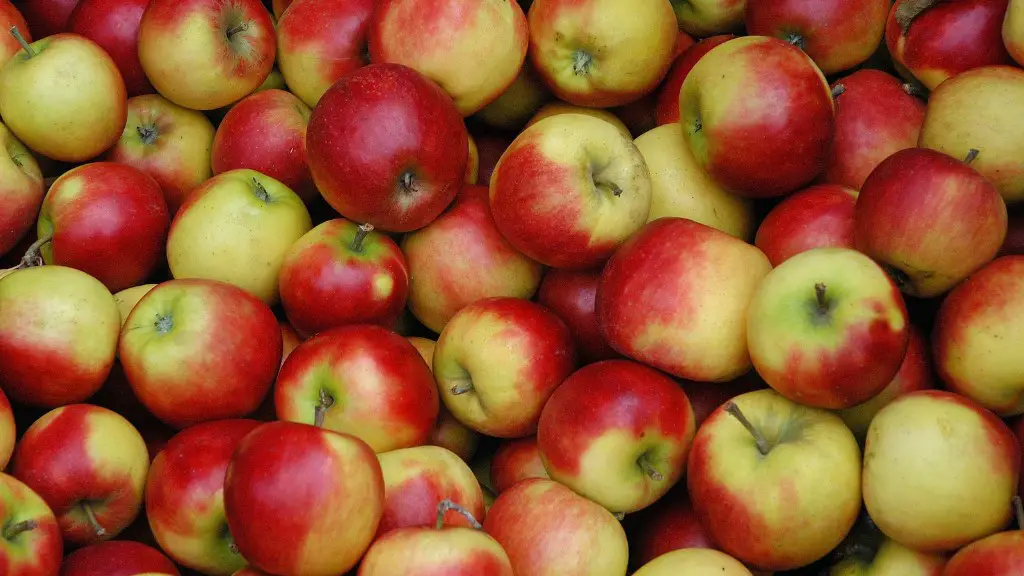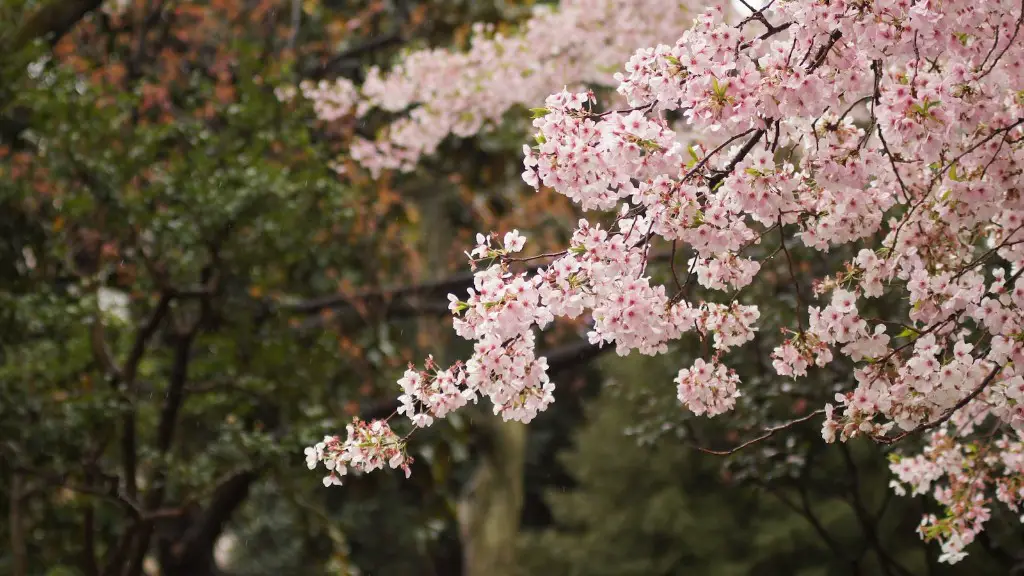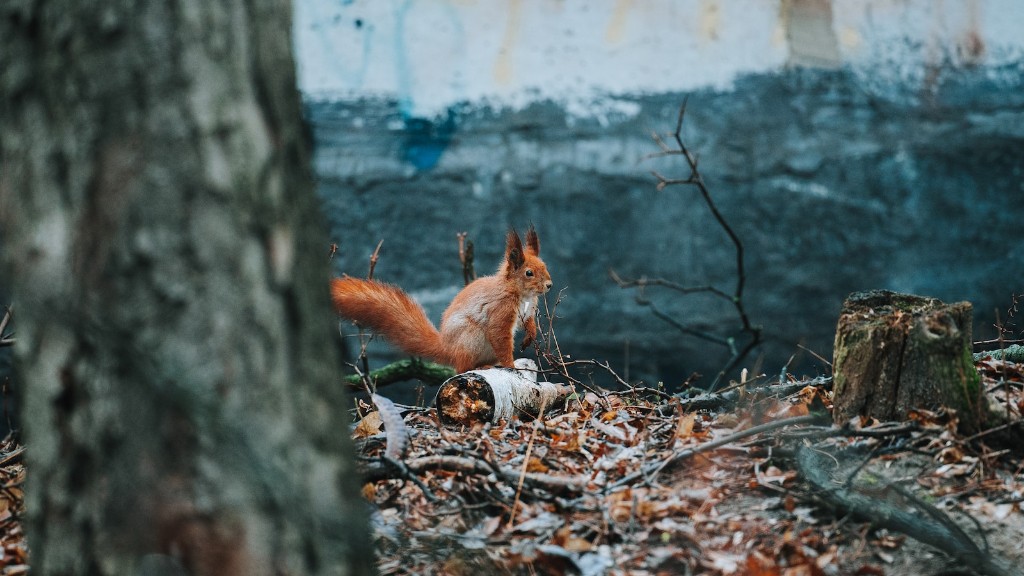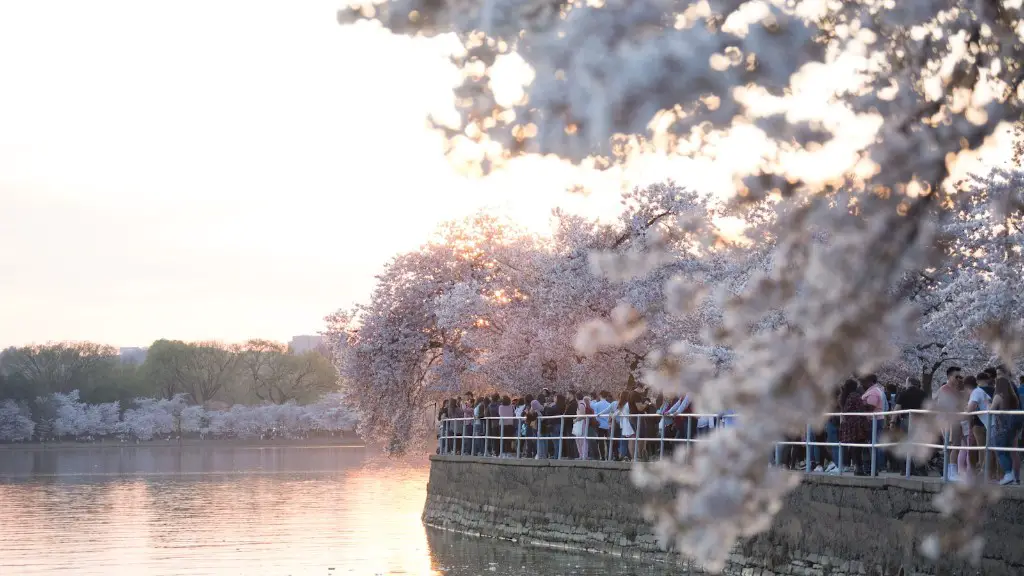Apple tree blight is a fungal disease caused by Venturia inaequalis, which can result in significant damage to a tree’s foliage, blossoms, and fruit. Fortunately, there are several proactive steps gardeners can take to help prevent the spread of apple tree blight.
Firstly, it is critical to pick up any fallen leaves or fruit that may be harboring fungal spores. This should be done frequently, particularly during the wet growing season, as these environments tend to be optimal for triggering the emergence of the spores. It is also advisable to prune any infected branches, as this can help both contain the infection and create a healthier environment for your trees.
Secondly, the use of fungicides needs to be considered. Fungicides are chemicals specifically designed to help keep fungal diseases in control. It is important to ensure the fungicide you choose is formulated to be compatible with apple trees, as some fungicides can damage the tree if applied incorrectly.
Thirdly, it is recommended to avoid working with the infected tree during wet weather as this increases the chances of the disease spreading. In addition, gardeners should avoid planting new plants and trees in areas where apple tree blight has been detected, as this can create an ideal environment for spores to thrive.
Finally, if your tree has been affected by the disease, it is important to take action as soon as possible to help limit its impact. Remove any affected leaves, blossoms and fruit, use fungicides if necessary, prune infected branches, and ensure healthy planting practices. Taking these proactive steps can help reduce any further damage to the tree and help keep your apple tree as healthy as possible.
Emergency Treatments
In cases where apple tree blight has taken hold, emergency treatments may be required. One of the most effective treatments is to drench the soil around the tree with a fungicide. This helps to both kill any active fungal spores and prevent spores from building up in the future. It is possible to use a chemical-based fungicide, or alternatively, some gardeners prefer a more natural approach such as using a bicarbonate of soda or vinegar solution.
In addition to soil drenching, it is advisable to use a foliar spray containing a fungicide to treat any infected branches or foliage. This helps the tree to recover more quickly and also helps stop the spread of the disease. It is important to note, however, that foliar sprays are hazardous and should always be used in line with the manufacturer’s guidelines.
Once a tree has been affected, it is important to keep an eye out for signs of the disease returning. Apple tree blight can be highly contagious, and as such, regular monitoring is essential. If signs of infection are detected, then additional emergency treatments may be necessary.
Long-Term Management
The use of fungicides can help prevent apple tree blight from establishing but it is important to understand that it is not a cure-all. As such, gardeners should also focus on long-term management techniques that help to create a tree that is resilient to fungal disease. This includes ensuring the tree is well-fertilized and receiving adequate levels of water, taking steps to improve soil condition, and ensuring the tree is getting sufficient sunlight.
In addition, it is important to avoid overwatering, as this can provide ideal conditions for fungal spores to germinate. It is also beneficial to mulch the soil around the tree to not only improve evidence structure and drainage but also to limit the amount of moisture in the soil.
Finally, it is beneficial to use companion planting around your apple trees. Companion planting involves planting certain herbs and other species alongside the tree, with the aim of providing beneficial compounds which can help a tree ward off fungal disease.
Soil Tests
Undertaking a soil test can help to identify deficiencies in your soil that may be resulting in apple tree blight. During the test, the nutrients, pH and organic matter levels in the soil are examined and, depending on the results, corrections may need to be made. It is advisable to consult a specialist when conducting a soil test and making corrections, as this helps to ensure the corrections are appropriate for your tree.
In addition to soil tests, it is also beneficial to conduct a visual inspection. During the inspection, key areas to assess include looking for signs of root rot, checking all growth points and any areas which may be vulnerable to fungal disease. A visual inspection should also include looking for any insects which may be present that could be carrying fungal spores.
Once any deficiencies in the soil are addressed, and any other corrective actions have been made, then additional steps such as the use of fungicides and mulch can be implemented as part of your apple tree blight prevention plan.
Natural Remedies
If fungicides are not an option, or you prefer a more natural approach to apple tree blight, then the use of organic remedies should be considered. An effective organic treatment for apple tree blight involves the use of a bicarbonate of soda solution. This is made by combining one teaspoon of baking soda with a liter of water and some liquid soap. Once mixed, this solution should be sprayed on any affected leaves and branches.
As well as baking soda, some gardeners prefer to use a combination of garlic, neem oil and natural soap. This mixture can help limit the spread of fungal spores and it is also believed to help reduce the severity of the infection. Garlic can also be used as an effective form of companion planting, as it helps to ward off fungal diseases.
Finally, it is important to note that any organic remedies should be applied carefully as there is always the chance they can damage the plant. In addition, they should be applied as soon as signs of infection are present in order to help reduce the impact of the disease.
Biotechnological Treatments
Biotechnological treatments provide an alternative solution to apple tree blight. These treatments are becoming increasingly popular among gardeners due to their effectiveness and minimal environmental impact. These treatments involve using a combination of bacterial and fungal species that have been collected from across the world, which help to protect the apple tree from fungal disease.
These treatments are applied directly to the roots of the tree and are typically slow-release. This helps to ensure the tree receives an even level of protection from fungal disease and helps limit the chances of the disease taking hold. The use of biotechnological treatments is also beneficial as it can help reduce the need for fungicides.
In addition, biotechnological treatments tend to be more sustainable than traditional control methods, as they rely on the system of natural competition, which helps to protect the environment. While the use of biotechnological treatments is not foolproof, they can be highly effective in helping to protect apple trees from fungal disease.
Fungicide-Resistant Varieties
Finally, gardeners may want to consider as an option the use of fungicide-resistant varieties. These varieties have been specifically formulated to withstand the effects of fungal diseases, and as such, can help protect your apple tree and reduce the need for ongoing treatments.
These varieties tend to be more expensive, but they are generally worth the extra cost as they are less prone to developing fungal diseases. In addition, they tend to be more disease-resistant than traditional varieties, and as such, they need less maintenance, meaning they can result in a more efficient gardening process.
Overall, it is important to understand that apple tree blight is an incredibly serious and destructive fungal disease. As such, it is essential gardeners take proactive steps to help prevent its spread and champion healthy planting practices. If a tree is affected by the disease, then quick action and preventative steps need to be taken as soon as possible to help limit the severity of the infection.



